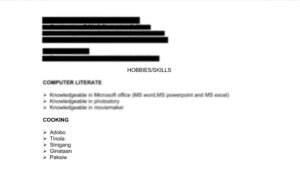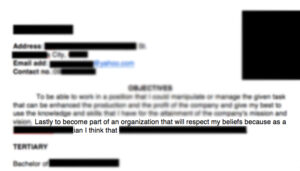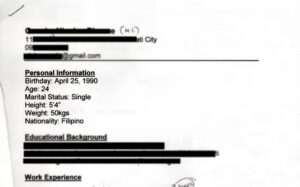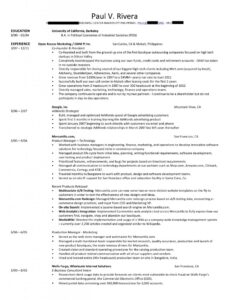3 Horrible Examples of Filipino Resumes

Technology has made the job search easier, as now we have ways to look and apply for jobs online, while being able to easily contact recruiters. With Kalibrr, you’ve got a platform to match you up with a job perfect for your skill set, making it even easier. But the reality is, signing up won’t a guarantee an interview. Technology and the internet can only do so much if your resume leaves much to be desired.
In the Philippines, before resumes was the “biodata.” Biodatas were temporary resumes for people with no work experience or who were yet to graduate from college. Biodatas are long and gone but Filipinos are still putting in unnecessary information on their resumes. Information like height, weight, and religion bleed over to comprehensive resumes, sharing the same page with your work experience.
What may be relevant to a certain local company could be irrelevant to others. These days, the largest and most powerful companies go through hundreds of resumes in a day. Companies will only look at the first page for a few minutes before deciding. It’s time to rethink what you’re really writing down.
If you’re still under the impression that the longer the resume the better, check out just a few examples of the worst resumes in the Philippines.
TOPICS
Special Skills ≠ Relevant Skills
An expansion manager for a large insurance company goes through dozens of resumes a day. In this resume shared to Kalibrr’s blog staff, the applicant tried to lengthen her resume to include a list of things she can cook. We all love a good adobo and a well-cooked sinigang but knowing how to prepare them doesn’t really mean you’re going to be a good insurance agent.

Long resumes are frowned upon these days, especially if they are intentionally lengthened to make it seem like you’re experienced. You may think a three-page resume is going to look impressive but if the last two pages are a list of 10 seminars, the names of your patients, and about 20 special skills, it’s just going to fly over the person’s head. Simple is better, basic is ideal. Only put in the seminars, skills, and other information that you know will make an impact. Only list the ones relevant to the job you are applying for.
Religiously Yours
We recreated a resume of an applicant who states her religious beliefs in her objective, gently demanding the company to recognize them and make certain adjustments.
It’s perfectly reasonable that we would want to work without being discriminated for our beliefs. But placing it in your resume isn’t necessary. Chances are, reasonable as the request may be, it’s going to raise a red flag to whoever’s reading it. The resume is a list of reasons why you’re qualified for a job, not a list of requests.
In defense of these resumes, many Filipinos grow up and think all of these are okay. It helps to do more research on what employers are actually looking for.
The Bio-resume
We saved the simplest resume for last.

Though we’ve stated it over and over again – only put useful information on your resume – we can’t state it enough.
The following resume is a recreated example of how many Filipinos write their resumes. Though we may be used to putting in height, weight, age, and other personal details, think about its relevance to the job you’re applying for. If it’s for a job that has to do with fitness, maybe put in your height and weight. If it’s a job that has to do with marriage counseling, put in your civil status. If you’re applying for a nursing job, maybe put that information up top.
It’s easy to just create one resume and send it out in batches. But if you really want this job, make sure the content is relevant to the position so that they know you’re fit for the job.

If you’d really want to get a call from a potential employer, create a proper resume.
As a bonus for all, Kalibrr CEO Paul Rivera shares his resume as a template of what they should look like: simple and straight to the point.






Belum ada komentar yang tersedia!